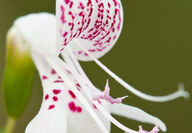Sorted by date Results 1 - 4 of 4

GAINESVILLE, Fla. --- Scrub mints are among the most endangered plants you've probably never heard of. More than half of the 24 species currently known to exist are considered threatened or endangered at the state or federal level, and nearly all scrub mints grow in areas that are being rapidly developed or converted to agricultural pasture. In a new study, researchers analyzed a distinct type of DNA marker, which shows there are likely more scrub mint species waiting to be...

The expansion of solar farms across the U.S. is similarly creating an abundance of bright, open spaces that require regular upkeep. Unused areas near the solar arrays are increasingly being viewed as prime real estate for growing native flowering plants that support pollinators. Duke Energy Florida recently completed construction of a new solar site in High Springs, Florida, and approached Daniels to see if he'd be willing to conduct a feasibility study that would assess plant...

A population of non-native aggressive, air-breathing fish known as the goldline snakehead (Channa aurolineata) was documented for the first time in the Gulf Coast region, according to a recent study. The fish were discovered in a freshwater pond in Manatee County, Florida, about 250-km from the only other known population of this species in the United States, which has existed in Broward County, Florida, since about 2000. Native to Asia, snakeheads have been introduced to the...

Researchers from the University of Florida are using butterflies as a way to measure the health of ecosystems in a new effort that may have far-ranging uses. In 2017, a group of scientists raised alarm bells by showing that flying insects had declined in Germany by more than 70% in the three preceding decades. Studies before and since then have shown similar patterns in insects on a global scale. But with 1 million known species - and conservative estimates indicating there ar...